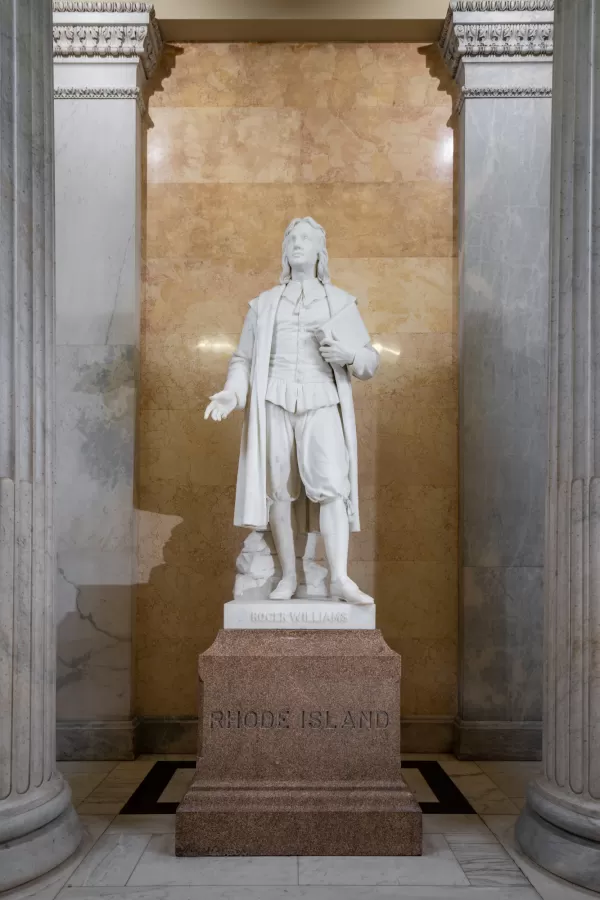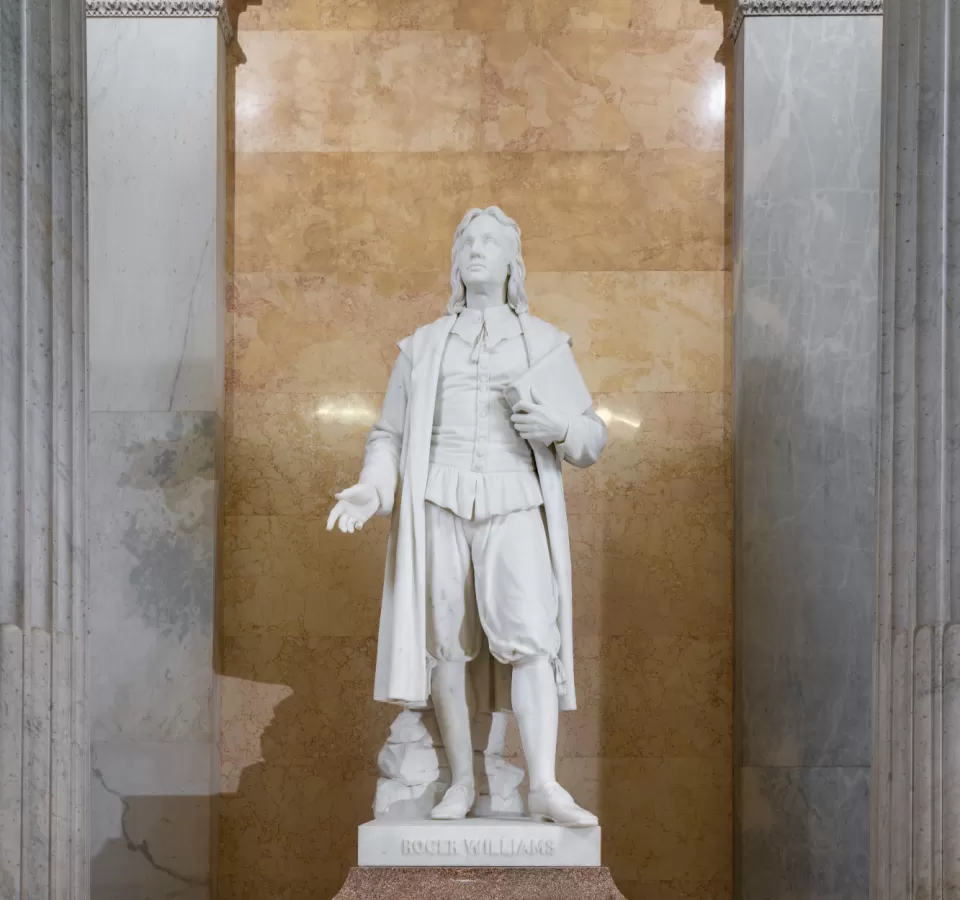This statue of Roger Williams was given to the National Statuary Hall Collection by Rhode Island in 1872.
Roger Williams was born in England between 1603 and 1606. He grew up a member of the privileged class and received a thorough liberal arts education from Sir Edward Coke, the great English jurist. Under Sir Edward's tutelage, Williams attended Cambridge, receiving his B.A. in 1627. He abandoned the study of law to become a priest in the Church of England.
Williams was interested in the Puritan movement and the newly established Massachusetts Bay Colony. He was warmly welcomed to the New World by Massachusetts governor John Winthrop when he arrived in Boston. Williams was an adamant separatist and accepted a post as an assistant pastor in Salem, reputedly a friendly place. However, his teachings were deemed radical and he was banished from Massachusetts Bay Colony in 1635. Williams founded the colony of Rhode Island in 1636 and secured a charter for Providence Plantation in 1664. His greatest gift to the colonies was his authorship of the declaration of the principle of religious liberty. Roger Williams died in 1683, around the age of 80.
Three hundred years after his banishment from Massachusetts, a monument in his honor was erected in Providence, Rhode Island. Set in a public park once part of Williams's property, it reminds Rhode Islanders of their illustrious founder and champion of religious freedom.
Artist
Sculptor Franklin Simmons, born in Maine in 1839, developed an early interest in painting and sculpture. After college he moved to Washington, D.C., where he sculpted relief portrait busts of cabinet members and military officers. In 1867, he moved with his wife to Rome and established a studio; except for occasional trips back to the United States, he remained there for the rest of his life. Working in the neoclassical style, he created statues and busts of figures from public life, mythology, and literature.
He was commissioned by the Grand Army of the Republic to sculpt a statue of General Grant to be given to the Congress, and legislation passed in 1890 authorized its acceptance. The first statue that Simmons created was not approved because it was not a good likeness; he sent a second version in 1899, and it was placed in the Rotunda in 1900.
His other works on Capitol Hill include Peace Monument on U.S. Capitol Grounds; statues of Ulysses S. Grant, William King and Francis Harrison Pierpont in the U.S. Capitol; and busts of Vice Presidents Charles W. Fairbanks, Hannibal Hamlin and Adlai E. Stevenson in the U.S. Senate collection. Simmons died in Rome in 1913.

